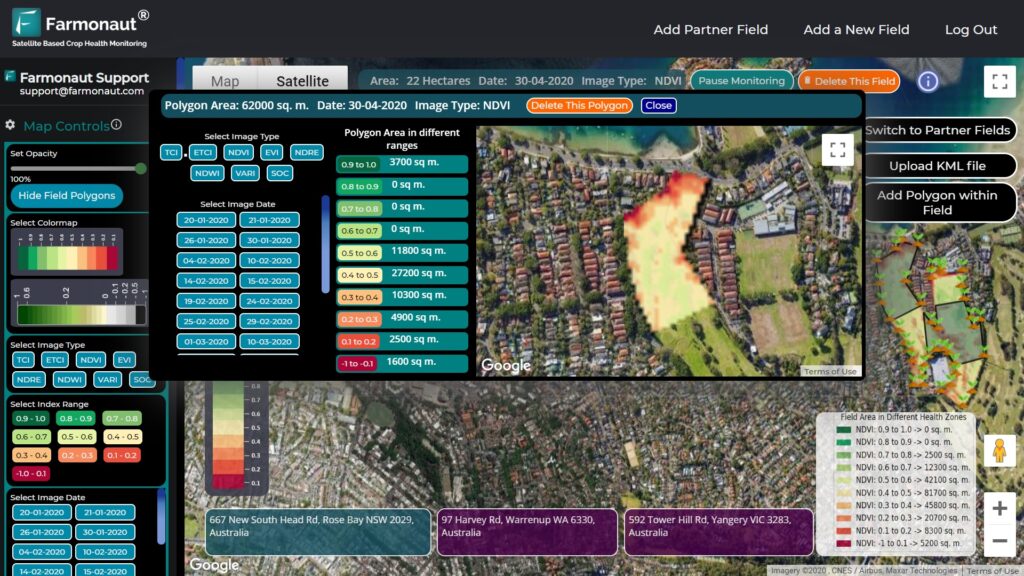Ghana’s Development at Risk: How USAID Closure Could Impact Healthcare, Education, and Agriculture
“USAID’s potential closure in Ghana could impact over 30 million citizens across healthcare, education, and agriculture sectors.”
In recent developments that have sent shockwaves through the international development community, we find ourselves confronting a situation of immense concern. The potential closure of the United States Agency for International Development (USAID) operations in Ghana threatens to unravel years of progress and jeopardize the future of millions. As we delve into this critical issue, we’ll explore the far-reaching implications for Ghana’s healthcare, education, and agricultural sectors, and what this means for the nation’s development trajectory.
Understanding the USAID Funding Landscape in Ghana
USAID has been a cornerstone of support for Ghana’s development programs, providing crucial funding and expertise across various sectors. Annually, Ghana typically receives around $150 million from USAID, a substantial sum that plays a pivotal role in driving progress in education, health, agriculture, and governance. For the fiscal year 2025, Ghana has requested approximately $137.7 million from USAID, highlighting the continued reliance on this international partnership.

The potential cessation of USAID support strikes at the heart of Ghana’s development efforts. With nearly half of the requested funds earmarked for the health sector, amounting to $69.2 million, the impact on healthcare initiatives could be particularly severe. This situation underscores the delicate balance between international aid and national development, raising critical questions about sustainability and self-reliance in the face of changing global dynamics.
Healthcare: A Sector Under Threat
The healthcare sector in Ghana stands to be one of the most significantly affected areas if USAID funding ceases. A specific $25 million partnership project focusing on enhancing primary healthcare in northern Ghana is among the initiatives likely to be jeopardized. This project, aimed at strengthening community health facilities and improving service delivery in some of Ghana’s most underserved regions, exemplifies the type of targeted intervention that USAID support makes possible.
- Impact on medical supplies and procurement chains
- Potential disruption to ongoing health programs
- Risk to improvements in maternal and child health
The loss of USAID funding could lead to a significant setback in Ghana’s efforts to improve its healthcare system. We may see a reduction in the availability of essential medical supplies, a slowdown in the implementation of health programs, and potentially, a reversal of gains made in critical areas such as maternal and child health.
Education: Building Accountability and Quality
In the realm of education, USAID’s support has been instrumental in driving improvements and fostering accountability. Nearly $16 million has been requested to maintain various educational programs, with a notable focus on a project launched in September 2023 called the Strengthening Accountability in Ghana’s Education System (SAGES) Activity.
This five-year initiative aims to bolster educational accountability and service delivery, a critical undertaking for Ghana’s future. The potential loss of this funding raises concerns about:
- The continuity of educational reform efforts
- The ability to improve educational outcomes across the country
- The implementation of innovative teaching and learning methodologies
Without USAID’s support, Ghana may struggle to maintain the momentum in educational improvements, potentially affecting millions of students and the overall quality of the education system.
Agriculture: Sustaining Growth and Adaptation
The agriculture sector, a cornerstone of Ghana’s economy, is also poised to face significant challenges without USAID’s support. Around $33 million has been sought for agriculture-related projects, including a vital $25 million initiative aimed at facilitating financing for micro, small, and medium-sized enterprises (MSMEs) in Ghana’s agricultural landscape.

This project, launched in collaboration with Absa Bank Ghana and Opportunity International Savings and Loans, directly targets vital regional economies that depend on agricultural productivity. The potential loss of this funding could have far-reaching consequences:
- Reduced access to financing for farmers and agricultural businesses
- Slowdown in agricultural modernization efforts
- Decreased resilience to climate change impacts on agriculture
Moreover, a smaller but crucial $3 million allocation is set aside for climate change initiatives, exemplified by the Feed the Future Climate-Smart Agriculture (CSA) Activity. This program assists farmers in adapting to climate change while aiming to enhance food security. The collapse of USAID would consequently impede these efforts, further exacerbating vulnerabilities within the agricultural sector.
The Broader Economic Implications
“Ghana’s national budget may face a shortfall of millions of dollars if international funding for development programs ceases.”
The potential loss of USAID funding is likely to affect Ghana’s national budget significantly. In the 2024 budget, over $8 million from USAID was anticipated to be utilized as part of bilateral and multilateral grants. While this amount may seem relatively modest compared to other incoming funds, its loss compels the Ghanaian government to seek alternative financing to continue essential projects, many of which operate on a five-year cycle.
This situation raises several critical questions:
- How will Ghana bridge the funding gap left by USAID’s potential closure?
- What impact will this have on Ghana’s economic development and growth projections?
- How will this affect Ghana’s ability to meet its Sustainable Development Goals (SDGs)?
The ripple effects of USAID’s closure could extend far beyond the immediate project impacts, potentially influencing Ghana’s overall economic stability and development trajectory.
Climate Change Adaptation: A Critical Concern
In an era where climate change poses an existential threat to agricultural productivity and food security, USAID’s support for climate adaptation initiatives in Ghana has been crucial. The potential loss of funding for programs like the Feed the Future Climate-Smart Agriculture (CSA) Activity could severely hamper Ghana’s efforts to build resilience against climate impacts.
Key areas at risk include:
- Implementation of climate-smart agricultural practices
- Research and development of drought-resistant crop varieties
- Capacity building for farmers on climate adaptation strategies
Without these initiatives, Ghana’s agricultural sector may become increasingly vulnerable to climate shocks, threatening food security and livelihoods across the country.
Governance and Accountability: Building Stronger Institutions
USAID’s support extends beyond tangible projects to include critical initiatives aimed at strengthening governance and accountability in Ghana. The potential closure threatens to undermine efforts to enhance transparency, reduce corruption, and improve public service delivery.
Specific areas of concern include:
- Support for electoral processes and democratic institutions
- Anti-corruption initiatives and transparency programs
- Capacity building for local government bodies
The loss of these programs could slow down Ghana’s progress towards more effective and accountable governance, potentially affecting citizen trust in public institutions and the overall quality of democracy in the country.
Global Development Implications
The situation in Ghana serves as a microcosm of the broader implications of USAID’s potential closure on global development efforts. As one of the world’s leading bilateral donors, USAID’s withdrawal could create a significant vacuum in international development funding and expertise.
This raises several important considerations:
- How will other donor countries and organizations respond to fill the gap?
- What does this mean for global efforts to achieve the Sustainable Development Goals?
- How might this shift the dynamics of international development cooperation?
The international community must grapple with these questions as we consider the future of global development in a potentially post-USAID landscape.
Innovative Solutions in Agriculture: The Role of Technology
As we consider the challenges facing Ghana’s agricultural sector in light of potential USAID funding cuts, it’s crucial to explore innovative solutions that can help bridge the gap. Technology-driven approaches to agriculture have shown promise in improving productivity, resilience, and sustainability.
One such solution is offered by Farmonaut, a pioneering agricultural technology company that provides advanced, satellite-based farm management solutions. While not a direct replacement for USAID funding, Farmonaut’s technologies could play a role in supporting Ghana’s agricultural sector during this challenging time.
- Satellite-Based Crop Health Monitoring: Farmonaut’s use of multispectral satellite images to monitor crop health could help Ghanaian farmers optimize their resource use and improve yields.
- AI-Driven Advisory Systems: The Jeevn AI advisory system could provide valuable insights and expert crop management strategies to farmers, potentially filling some of the gaps left by reduced agricultural support programs.
- Blockchain-Based Traceability: Farmonaut’s blockchain solutions could enhance transparency and trust in Ghana’s agricultural supply chains, potentially attracting private sector investment to offset some of the lost funding.
While these technological solutions cannot fully replace the comprehensive support provided by USAID, they represent potential avenues for maintaining progress in agricultural development and adaptation to climate change.
For more information on Farmonaut’s agricultural solutions, you can visit their web app or explore their API offerings.
Comparative Impact Assessment
| Sector | Current Status | Potential Impact | Long-term Consequences |
|---|---|---|---|
| Healthcare | $69.2 million in USAID funding requested for FY 2025 | Disruption in medical supplies and ongoing health programs | Potential reversal of gains in maternal and child health |
| Education | $16 million requested for educational programs | Jeopardized accountability and service delivery improvements | Slowed progress in educational reform and outcomes |
| Agriculture | $33 million sought for agricultural projects | Reduced access to financing for MSMEs in agriculture | Decreased resilience to climate change impacts |
The Way Forward: Building Resilience and Self-Reliance
As Ghana faces the potential loss of USAID funding, it’s crucial to consider strategies for building resilience and fostering self-reliance. While the challenges are significant, they also present an opportunity for Ghana to reassess its development strategies and explore new avenues for growth and sustainability.
Key considerations for the way forward include:
- Diversifying funding sources and exploring public-private partnerships
- Strengthening domestic resource mobilization to reduce dependence on external aid
- Investing in capacity building to enhance local expertise and implementation capabilities
- Leveraging technology and innovation to improve efficiency and effectiveness across sectors
By focusing on these areas, Ghana can work towards creating a more resilient and self-reliant development model that can withstand external shocks and changes in the international aid landscape.
Conclusion: A Call to Action
The potential closure of USAID operations in Ghana represents a critical juncture in the country’s development journey. The impacts on healthcare, education, and agriculture are profound and far-reaching, threatening to unravel years of progress and jeopardize future growth.
As we’ve explored throughout this analysis, the challenges are multifaceted and complex. However, they also present an opportunity for innovation, resilience, and renewed commitment to sustainable development. It’s crucial for all stakeholders – the Ghanaian government, civil society, the private sector, and the international community – to come together to address these challenges head-on.
We must advocate for continued support for critical development programs, explore innovative funding mechanisms, and invest in building local capacity and self-reliance. Only through collective action and a shared commitment to Ghana’s future can we hope to navigate these turbulent waters and emerge stronger on the other side.
The story of Ghana’s development in the face of these challenges is still being written. It’s up to all of us to ensure that it’s a story of resilience, innovation, and ultimately, success.
FAQ Section
Q1: How much funding does Ghana typically receive from USAID annually?
A1: Ghana typically receives around $150 million annually from USAID to support various development programs.
Q2: Which sectors in Ghana are most likely to be affected by the potential USAID closure?
A2: The healthcare, education, and agriculture sectors are expected to be the most significantly impacted by the potential closure of USAID operations in Ghana.
Q3: What is the SAGES Activity, and why is it important?
A3: The Strengthening Accountability in Ghana’s Education System (SAGES) Activity is a five-year initiative launched in September 2023 aimed at bolstering educational accountability and service delivery in Ghana. It’s crucial for improving the quality and effectiveness of the education system.
Q4: How might the potential loss of USAID funding affect Ghana’s efforts to combat climate change?
A4: The loss of USAID funding could significantly hamper Ghana’s climate change adaptation efforts, particularly in the agricultural sector. Programs like the Feed the Future Climate-Smart Agriculture (CSA) Activity, which helps farmers adapt to climate change and enhance food security, could be at risk.
Q5: What are some potential strategies for Ghana to mitigate the impact of USAID’s potential closure?
A5: Some strategies include diversifying funding sources, strengthening domestic resource mobilization, investing in capacity building, and leveraging technology and innovation to improve efficiency across sectors.
Earn With Farmonaut
Earn 20% recurring commission with Farmonaut’s affiliate program by sharing your promo code and helping farmers save 10%. Onboard 10 Elite farmers monthly to earn a minimum of $148,000 annually—start now and grow your income!
For more information, visit Farmonaut’s Affiliate Program.
As we conclude this comprehensive analysis of the potential impacts of USAID’s closure on Ghana’s development, it’s clear that the challenges ahead are significant. However, with innovative approaches, strategic planning, and a commitment to resilience, Ghana can navigate these uncertain times and continue its journey towards sustainable development.
For those interested in exploring technology-driven solutions in agriculture, consider checking out Farmonaut’s offerings:
For developers interested in integrating agricultural data into their applications, explore Farmonaut’s API Developer Docs.
As we move forward, it’s crucial to remember that the story of Ghana’s development is not just about numbers and funding. It’s about the lives of millions of Ghanaians who depend on these programs for their health, education, and livelihoods. By working together, innovating, and staying committed to sustainable development, we can help ensure a brighter future for Ghana and its people.
In conclusion, while the potential closure of USAID operations in Ghana presents significant challenges, it also offers an opportunity for reflection, innovation, and renewed commitment to sustainable development. By leveraging technology, fostering partnerships, and building resilience, Ghana can navigate these challenges and continue its journey towards a more prosperous and self-reliant future.












